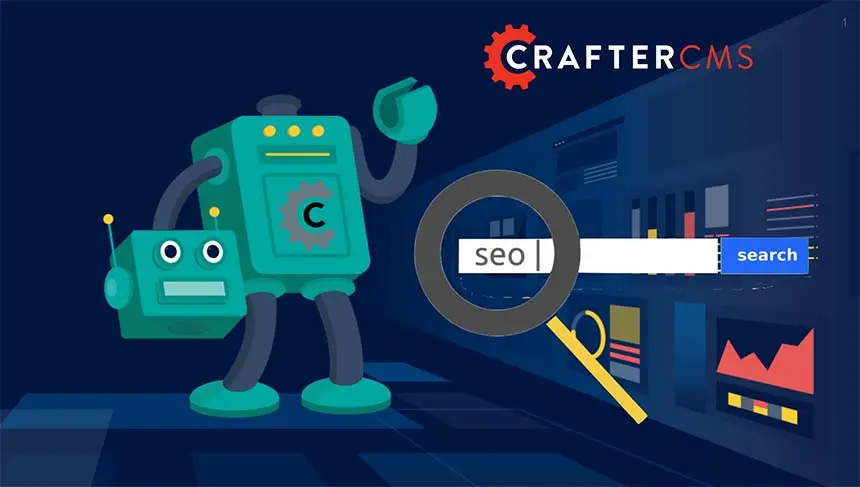Using Generative AI to Improve Content Management

Russ Danner

Almost every product and headline in the technology space today mention AI. A Gartner survey of 2500 executives points out that up to 70% of organizations are currently in exploration mode when it comes to generative AI. Around 45% of those executives mention that the emergence of ChatGPT has prompted them to increase their investment in artificial intelligence.
2023 has become the year of artificial intelligence, and it is also playing a significant role in transforming and improving content creation, management, and publishing activities.
AI: A Brief Overview
Is AI new? No, but something must be driving these extraordinary changes this year.
History of AI
The root of AI goes back to 1950 when Alan Turing first proposed the idea of the Turing test. The Turing test refers to a simple idea that we can test a computer —what we now call an AI — to see if it will respond to an inquiry in the same fashion as a human would, in a way that is indistinguishable from a human. In 1955, the term artificial intelligence was coined by John McCarthy, and by the mid-1960s, there were some primitive Chatbot-style prototypes.
Between 1960 and the late 1990s, there was a lull in AI-based activity, a time called the AI winter. This lull was due to a lack of funding and infrastructure for artificial intelligence research, as the timing wasn’t right for a massive investment in this area—however, the 2000s brought on a major resurgence in AI research services and products. Since the early 2000s, AI has steadily grown in terms of its capabilities, public awareness, and availability as an embedded element of many products and services.
Factors Driving the AI Surge
Has a major advancement in AI processing and research recently occurred to spark the AI frenzy we have today? Well, yes and no.
Recent advancements in AI research have been significant, but there’s more to it than that. The reality is that many things have finally come together in a way that causes network effects. In addition to AI-related techniques and algorithms, there have been major advances in the types of computer infrastructure and how we can deploy that infrastructure that has helped AI.
For example, GPUs, TPUs, and other chips have become widely available. These chips are optimized for the distributed processing and scale required for machine learning, natural language processing, and other AI workloads. Moreover, these architectures are easily and cost-effectively deployed at scale in the cloud.
Another critical factor that has led to a sudden surge in AI is access to enormous datasets. We can now collect, transfer and process massive amounts of data and cloud computing. Big data initiatives have been major enablers of this also, through social media and a growing ecosystem of IoT capabilities.
Many of these factors have been in some development or use for a long time. AI has been doing tangible work in this field for over a decade. The public has become acquainted with AI-based applications in their day-to-day activities. However, a few use cases that were given easy-to-use interfaces for otherwise complicated tasks have caught the public’s attention.
For example, self-parking and self-driving cars have become more commonplace. On the opposite side of the coin, AI-generated profile pictures on social media have proven to be a fun activity that generates virality. Being able to iterate on those results, get back a response and post them to peers has caused a stir and shown how we can get many people interacting with AI at scale.
Narrow AI vs. General AI
There are fundamentally two classes of AI: narrow AI and general AI.
Narrow AI
Narrow AI seeks to solve a single problem or class of problems or tasks. The AI is goal-oriented and works within a specific context on specific tasks. Some examples include:
- Autonomous Driving: Within the umbrella of autonomous driving, there are several AI examples, from basic computer vision to classification and decision-making tasks.
- Copywriting: Organizations can leverage AI to generate written texts, like blogs, social posts, and other assets.
- Language Analysis: Use narrow AI to analyze written content to understand what the AI thinks the content is written for in terms of audience tone and purpose. This can help ensure that the content is written for a specific audience or target that has those attributes.
- Image Generation and Manipulation: Image generation manipulation is very similar to copy generation but in a visual medium.
General AI
General AI, by contrast, seeks to achieve and perhaps even surpass, at some point, human cognition. Two ends of the spectrum are AlphaGo versus the Hal 9000. AlphaGo specifically targeted learning to play Go, which is a much more sophisticated and complex game than chess, and the AI was able to learn how to play that game well enough to beat the world’s top players.
On the other hand, the Hal 9000 had a very general thought process in addition to task-oriented processing capabilities and even exhibited emotions and motives associated with its cognition.
While there is a lot of interest from the public in solving that general AI space and where things tend to go at their extreme, for our purposes, narrow AI is more than sufficient to completely transform the digital experience space and the digital experience management problems associated with it.
What the Average Person Needs to Understand About AI
There is an ocean of AI-related jargon with phrases like NLP or natural language processing, large language models (LLMs), machine learning, etc. While these terms are useful in terms of pure AI mechanics, it’s enough to know that all of these terms fall squarely under the umbrella of AI and are specific mechanics required to support AI. However, a deep understanding of them isn’t necessary to leverage AI for digital experiences.
How AI Works
Think of AI as a black box in which we can simply make an inquiry as input, allowing the AI to do its work, get back some output, and then iterate on that process. OpenAI was able to leverage this by simply providing a chat-based interface that was entirely natural for almost everyone and naturally supported iteration on a task in the form of conversation.
The underlying key to AI is the model that it works on, along with the data and training processes and feedback loop that was used to build and adjust the model. The how, in terms of how the data is prepared and used to train the model, isn’t fundamentally important. What is important is that what separates AI from traditional code is that it learns and adjusts, whereas, in conventional code, the logic is predefined. Meanwhile, AI is cognition trained and could be refined through iteration on that training and use.
Leveraging AI in a CMS
At the highest level, a content management system can be divided into two functional areas: content authoring and content delivery. Authoring is where we create and manage the content and configuration of digital experiences. Delivery is where our end users, or audience, consume and engage with our digital experiences. Content delivery is a good place to look at present-day challenges that are a good opportunity for AI to improve.
Watch Video: ChatGPT / OpenAI Integration with CrafterCMS for Generative Content
Content Authoring Challenges
On the content authoring side, AI presents the opportunity to improve our efficiency, multiply our output and magnify our creativity.
Idea Generation
Coming up with ideas for blogs, images, white papers, ebooks, webinars, and other types of content can be difficult. However, this is a much simpler process for AI, provided the inputs are appropriate.
Copy and Media Manipulation
With our guidance, artificial intelligence can help us write content and create media assets, greatly improving our throughput as content authors.
Content Analysis
Whether an AI or human creates content, it’s essential to ensure it is on target. Who is the audience? What is the tone of the content? How complex is the content? Is the content SEO optimized? These are questions that must be asked. Even humans with expertise can take a ton of time to answer these questions per asset, but AI can handle them in seconds.
Content Enrichment
Another challenge in content management is getting the most out of our content, making it findable, searchable, and leverageable by our software systems. This requires metadata. Using an image as an example, authors typically have a file name and file size associated with the image at their disposal.
If they’re lucky, those images are also stored in a folder structure that adds some organization and supporting information to that image. However, finding the right image can often be very difficult because of this lack of information.
In contrast, knowing exactly what’s in the image, the color palette, and what other images are similar to that image is much more powerful. The way to get this information and make it leverageable is to extract these details from the image and store it in the metadata by looking at the image itself. Doing this manually isn’t scalable, but AI-based image processing and object recognition make this content enrichment task much more simple and more scalable. This process can apply to images and video, audio, rich-text documents, and any kind of content.
Translation and Localization
Today audiences are global, so translating and localizing content is necessary for many organizations. Even with great technical systems and support available today across many languages and regions, localization and translation create a considerable amount of additional administrative work and maintenance work associated with content management. AI can assist by building on top of traditional translation memories and machine translations with more generalized and cost-effective AI-based solutions.
Personalization
Personalization has been around for some time, and most organizations that have tried it have only had limited success. Everyone wants to go big with this idea. Still, they quickly discover that personalized content, like translated and localized content, has a massive multiplication effect on the content required to maintain it.
Effective personalization isn’t as scalable as most content teams would like. However, AI presents an answer. Given strong generalized content and a good idea of who the audience is, AI can rewrite the content for that given audience, making the content multiplication a nonissue. It’s also possible to employ AI and learn from the effectiveness of that content in the delivery context to regenerate the content on an ongoing basis to be much more effective.
Content Reuse
Another common issue in content is reusing content. A blog post may be suitable for some users, but others would prefer that same content as an infographic, video, audio, or some other format. But converting from one content asset type to another is time-consuming and labor-intensive. Again, AI can assist in that activity, enabling organizations to get more value from that content and distribute it to many mediums and forms without minimal effort and expense.
Content Workflow, Analysis and Optimization
AI can learn and help in making decisions about content scheduling, content retention, and how and when we should roll out new content. We may also be able to use AI to understand how we’re working and where we could be working more efficiently to improve our workflows.
Software Development
To date, AI has a wide range of software development capabilities. It can assist developers and make them more efficient by making suggestions and performing debugging and refactoring activities. It can even rewrite whole units of code itself. Ultimately, AI will be able to automate or enhance activities like content modeling and configuration and draw the composition, development, and integration efforts around new experiences within their platform based on AI.
Content Delivery Challenges
For content delivery, AI can help deliver better and more targeted end user experiences.
User Behavior Analytics
“We want to understand who our users really are, and their long term and immediate goals.”
Marketers and product owners are always looking to answer that specific question. They’re forced to speak and interact with users in a general manner, when they don’t have this information. But with this information, they can tailor the response. It seems like an easy answer, but it’s typically more complicated than it sounds.
Additionally, end users and marketers want a frictionless way to get these questions answered that understands the user in a way that wells them without crossing lines that would otherwise creep them out. AI can play a major role here because learning is what AI is about.
Easy and Natural Interfaces
Another opportunity for AI is to make our experiences easy and natural with AI-enabled chatbots and assistant skills. One of the best ways to make an experience easier is to make it tailored to the specific user and make it task-oriented to what they’re trying to achieve. This can be done by personalizing the content and experience based on individuals. However, this can be a major problem in terms of data complexity and volume, so AI offers a scalable approach to solving this problem.
Personal Recommendations
In many ways, this is a specialization of an easy and natural interface that combines all aspects of experience customer data analysis.
Considerations When Using AI for Content Management
While using AI for content management offers numerous benefits, some key considerations must be made.
Accuracy, Authenticity, and Fit
Ensure that any content that is generated with AI is really on target. Content that is AI-generated feels generic and robotic. That type of content triggers a negative emotional response because it lacks authenticity, and in many ways, it often lacks fit. Another challenge with AI-generated content can be accuracy. AI has this problem where its model and view of the world or that space are inaccurate, it will not give correct responses.
So it’s essential to ensure that the following to guarantee accuracy:
- The model is correct, and the training guides the model to improve correctness over time.
- The model has enough information to provide specialized answers for our specific domain.
SEO
Another consideration is SEO. It doesn’t help to vastly improve our content output capabilities if Google ignores or penalizes all that content. Currently, Google will treat AI-generated content like any other content as long as the content is useful and not plagiarized. The key to remember is to monitor content and SEO for issues and adjust our models and input accordingly.
Plagiarism, Copyright, and Public Policy
AI creates new content based on existing content. It does not plagiarize by directly copying and pasting but may summarize or synthesize content in a fashion that is too close to the source material and doesn’t give credit where credit is due. The solution here is awareness and analysis.
AI for content generation is a relatively new and fast-moving topic. On the other hand, public policy is most often slow-moving, somewhat behind from both a technical capabilities perspective and an adoption perspective. Businesses can expect to see some updates in laws and regulations in the next few years as more and more people in organizations leverage AI to create their content and experiences.
Leveraging AI With CrafterCMS
Artificial intelligence can exponentially transform the content management and digital experience space.
CrafterCMS is a headless CMS enabling content creators to use generative AI via ChatGPT and OpenAI integration. Content teams can already leverage CrafterCMS’s powerful Crafter Studio that provides WYSIWYG editing, drag-and-drop experience building, multi-channel and multi-lingual previews, and other user-friendly capabilities. Now, with the help of generative AI tools, content authors can easily generate ideas, copy images, and more, and dramatically improve productivity of their content management processes.
Learn more about how CrafterCMS is elevating the content creation, editing, publishing and delivery experience with the help of AI by viewing recorded webinar: Leveraging AI to Transform Content Management
Related Posts

Navigating the Future of Digital Experiences: A Deep Dive into Emerging Trends

Amanda Jones

Building Personalized Digital Experiences for a Cruise Liner

Sara Williams

CrafterCMS Wins More G2 Awards Spring 2024

Amanda Lee

Headless CMS SEO (How to Do SEO Right With a Headless CMS)

Amanda Jones
Related Resources
-

Personalized Digital Experiences for a Cruise Liner
Webcast
-

Modernizing Video Delivery and Content Management at CPAC, A Canadian Nationwide Broadcaster
Webcast
-

How to Migrate from Contentful to CrafterCMS
Tutorial
-

Partner Solution: Live Video and Conferencing for Digital Events
Webcast
-

The Hire Street: Powering Private Events and Catering E-Commerce with CrafterCMS
Case Study





